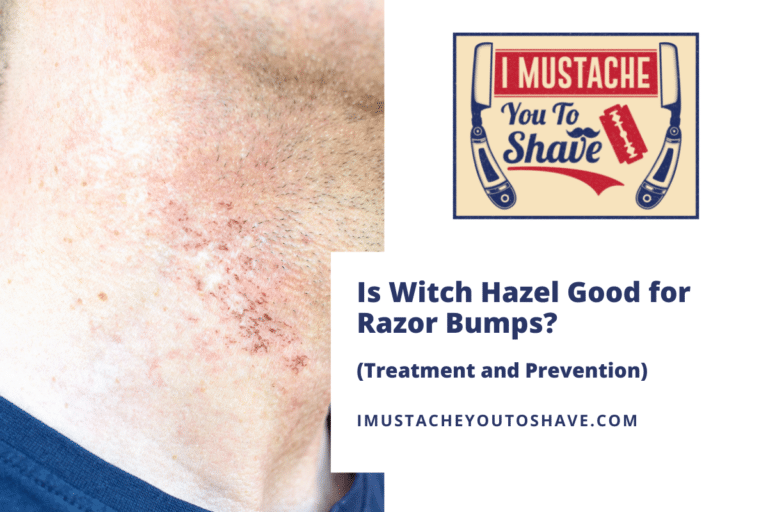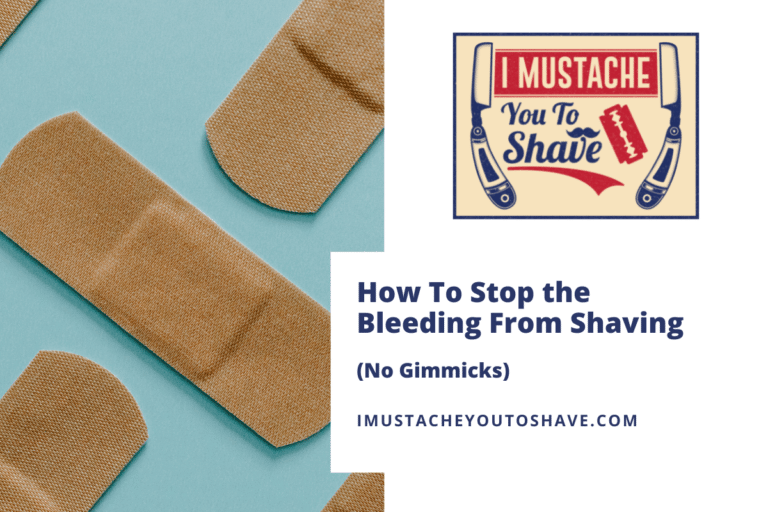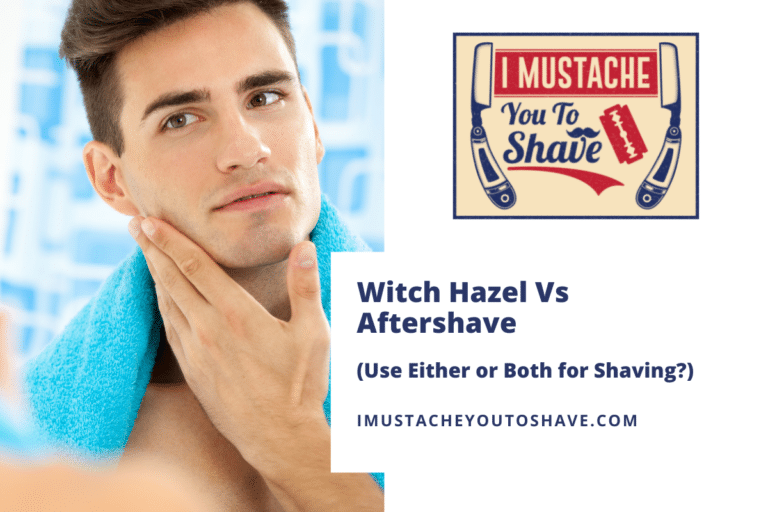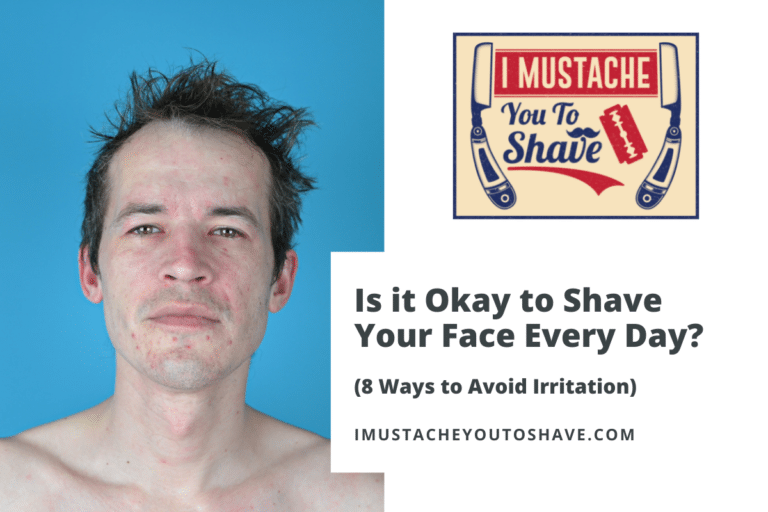Razor Bumps Vs Razor Burn (Differences, Treatment, Prevention)
Anyone (man or woman) who has been shaving for any period of time has probably dealt with unsightly and painful irritation at one time or another. If this is a recurring issue for you, identifying what is causing the irritation is the best way to calm it. While often used interchangeably, razor bumps and razor burn are two distinct conditions and should be treated differently.
The difference between razor bumps and razor burn is razor bumps are raised and the result of ingrown hairs while razor burn is flat and the result of skin irritation. Both conditions can flare after a shave, although razor burn usually occurs immediately while razor bumps take a day or two to develop.
If you want to learn more about razor bumps and burns including how to prevent and treat them, read on!
The difference between razor bumps and razor burn
Razor burn is more common than razor bumps. Razor bumps are an inflammatory skin condition, while razor burn is skin irritation.
Razor bumps resemble pimples and usually occur a day or two after shaving. These bumps are the result of new whiskers growing back into the skin instead of straight out. Razor burn resembles a rash and occurs almost immediately after shaving. The affected area becomes red, raw, and often burns.
Razor bumps are referred to in the medical world as pseudofolliculitis barbae (PFB) which literally means “looks like folliculitis in the beard.” There is another similar skin condition called folliculitis barbae that is caused by the Staphylococcus aureus bacterium. PFB bumps can look similar but can be traced back to ingrown hair. Left untreated, these bumps can eventually become infected and painful, and lead to scarring.
Razor burn refers to areas of the skin that are burned or scraped during the shaving process. It is a form of irritant contact dermatitis. Those with sensitive skin can be highly susceptible to this type of shaving irritation. The redness and rash of razor burn are usually short-lived and improve as adjustments are made to the shaving process.
Can you have only razor bumps or razor burn?
If you shave, chances are you will suffer from periodic razor burn at some point due to dull razors, poor technique, or spotty skin prep. Razor bumps are less common because they tend to affect specific populations.
You can have razor bumps or razor burn at the same time, although you’re more likely to have one or the other. Members of the Black and Asian populations suffer from razor bumps more often than other ethnic groups. Razor burn can affect anyone depending on skin sensitivity and the shaving environment.
While anyone can get one-off ingrown hairs, studies show that razor bumps chronically occur most often in black men and those with curly hair types. Up to 5 million black men are thought to suffer from a severe form of this disorder.
Razor burn or razor rash is usually a result of shaver error and can be corrected easily. Laying off the razor for a day or two is often all it takes to make the rash disappear.
Fun Fact: Almost 6% of the military’s dermatology consults during the Vietnam War were for razor bumps. This led the way for “shaving waivers” in the otherwise clean-shaven branches of service.
What if you have both?
If you have one condition, is it possible to have the other as well? Yes, it’s possible but not very common.
You can have both razor bumps and razor burn at the same time, but the treatment for each condition will be different. Severe razor bumps can be chronic and may need medical intervention. Razor burn is temporary and can resolve itself quickly.
Let’s uncover the causes, treatments, and preventive measures for each annoying condition.
What causes razor bumps?
At first glance, you might think the bumps on your face are acne. Razor bumps often mimic white heads or cysts under the skin, however, they are caused by wild hair instead of a clogged pore.
Ingrown hairs cause razor bumps. Instead of growing straight out of the skin, the facial hair grows inward back toward the hair follicle. This results in a bump under the skin. If having an outbreak, shaving can scrape off the tops of the bumps and allow bacteria to form in the follicle causing pain and infection.
A dermatologist can diagnose this condition by closely examining the skin. In most cases, they can spot the errant hair causing the problem. Once the problem becomes widespread, medical intervention may be necessary to treat the condition.
Factors that contribute to issues with razor bumps
Over 50% of the black male population is thought to suffer the wrath of razor bumps.
The most common factors contributing to issues with razor bumps are one’s ethnic background, hair type, and duration between shaves.
Let’s take a look at these factors.
Ethnic background
Black men are at the greatest risk of developing chronic razor bumps. Those of Asian descent are a distant second.
Men with darker skin tones can also be predisposed to skin discoloration and scarring when razor bumps develop.
Curly hair
Those with curly hair have a greater risk of developing razor bumps. Curly hairs can become tangled easily and can curl inward allowing them to reenter the skin.
Curly hair is often coarse and the hair follicles are oddly shaped causing whiskers to grow at angles instead of straight.
Duration between shaves
Going too long between shaves can also increase the chances of razor bumps if you’ve never had them.
This may sound counter-intuitive but daily shaving cuts down on the risk of hair getting long enough to grow back into the skin. Of course, if you already suffer from razor bumps, daily shaving can irritate the skin, so it may be best to let your beard grow.
How to treat razor bumps
If you already suffer from razor bumps, there are some strategies you can implement to get some relief.
The easiest way to treat razor bumps is to put away the razor. Keeping the skin as healthy as possible with moisturizers, antibacterial products, and exfoliants will reduce the chance of further irritation and infection. If your razor bumps aren’t going away, see a dermatologist. You may need prescription products.
Let’s dive into these treatments in more detail!
Let your beard grow
If you already have a lot of razor bumps, the best treatment is to let your beard grow.
Nixing shaving altogether erases the blunt, weird angles of new hair growth that tend to grow inward. Even if you work in an industry that frowns on facial hair, medical exemptions can be granted for bad cases.
Moisturize the skin
Dry skin is irritated skin.
Keeping your skin well-hydrated cuts down on flaky, dry skin that can further irritate and clog pores.
Kill the bad bacteria
Using an anti-bacterial wash can keep bad bacteria from entering the skin.
This will keep skin infections at bay, especially if you are still shaving.
Apply glycolic acid
Glycolic acid is an alpha-hydroxy acid that helps exfoliate the skin, treats inflammation, and lifts hair off the skin reducing the incidence of becoming ingrown.
Studies show glycolic acid can reduce razor bump lesions by 50%.
See a professional
Dermatologists are trained to diagnose and treat skin conditions.
If what you are doing isn’t offering relief, see a professional. They can prescribe medications or topical treatments to help clear up the bumps.
How to prevent razor bumps
While you can’t change your ethnicity or hair type, there are some steps you can take to prevent razor bumps from occurring in the first place.
Razor bumps may be prevented by shaving often, properly preparing the skin before shaving, and keeping your pores clog-free.
If you suffer from razor bumps, check out these tips for relief.
Shave often
This tip ONLY applies if you don’t already suffer from razor bumps.
If you shave every day, your facial hair never gets long enough to grow inward and become ingrown.
If you’re already suffering razor bump wrath, this option isn’t for you. Instead, see the treatment section above.
Prepare the skin
Make sure your skin is hydrated, moist, and well-lubricated before you shave.
This will cut down on irritation.
Keep pores clog-free
A clogged pore can crowd and adversely affect the hair follicle causing ingrown hair.
Exfoliating and using non-comedogenic products will keep your pores free of dead skin and dirt.
What causes razor burn?
Remember as a kid when you would fall on a carpeted floor and get that annoying carpet burn on your knees? Razor burn is a similar phenomenon.
Razor burn is caused by friction. The top layer of skin is scraped off resulting in a red rash and burning sensation. Friction can occur due to dull, dirty razors or poor shaving preparation.
Just like your knee scraped across the carpet, a dull, clogged razor can scrape across your face. This leads to skin irritation. Add in already dry skin and you have a big problem. Skip the shaving cream and you’re doomed.
Factors that contribute to issues with razor burn
If you want to avoid razor burn, think sharp razors and hydrated skin.
Dry, sensitive skin, dull razors, and skipping pre-shave preparation are factors that contribute to razor burn.
Let’s look at how these factors can affect your skin.
Dry, sensitive skin
If you already have dry, flaky, and irritated skin, shaving can just make it worse.
Hydrating with a daily moisturizer and pre-shave product will help.
Dull razors
Skin cells and old cream can dull blades quickly.
If you are using a multi-blade razor, make sure you replace it often.
A dull razor drags across your skin causing irritation. A sharp blade glides.
Dry shaving
Dry shaving shouldn’t even be in your vocabulary. Don’t do it!
Razor burn and dry shaving are best buds. You don’t need them in your life.
How to treat razor burn
If you do get a case of razor burn, the good news is that it is easy to treat at home.
Razor burn can be treated by taking a short shave break, protecting the skin barrier, and applying hydrocortisone cream.
Keep reading to find out how each of these treatments can help your skin.
Take a shave break
Since razor burn is a temporary condition, put the razor away for a day or two to let the skin heal.
Protect the skin barrier
Soothe red, itchy skin with moisturizing oils like vitamin E, jojoba, and shea butter. Collagen can also speed up skin regeneration.
Apply hydrocortisone cream
Almost everyone has an over-the-counter hydrocortisone cream in their medicine cabinet. If your burn is severe, apply a small amount to speed up healing.
How to prevent razor burn
Razor burn doesn’t have to be a common occurrence. There are some steps you can take to protect your mug from the burn.
You can prevent razor burn by moisturizing your skin, using a sharp razor, applying shaving cream, and finishing your routine with an aftershave product.
Keep reading for a more detailed explanation on how to prevent razor burn next time you shave.
Moisturize your skin
If your facial skin falls into the dry, sensitive category, make sure to moisturize well before a shave.
This will ensure the razor has an ideal surface to work its magic.
Use a sharp razor
Speaking of the razor, make sure you always use a super, sharp blade.
Multi-blade cartridges and disposable razors can get clogged with gunk and go dull quickly. Opt instead for sharp safety razor blades and shave in the direction of hair growth.
Apply a shaving cream
Dry shaving is the enemy if you’re fighting a razor burn battle.
Applying a warm, frothy shaving cream will offer your skin protection against friction.
Cool off with an aftershave
An aftershave product containing witch hazel or aloe can soothe the skin and take away the burn.
Be aware that alcohol-based aftershaves can dry out the skin causing irritation.







